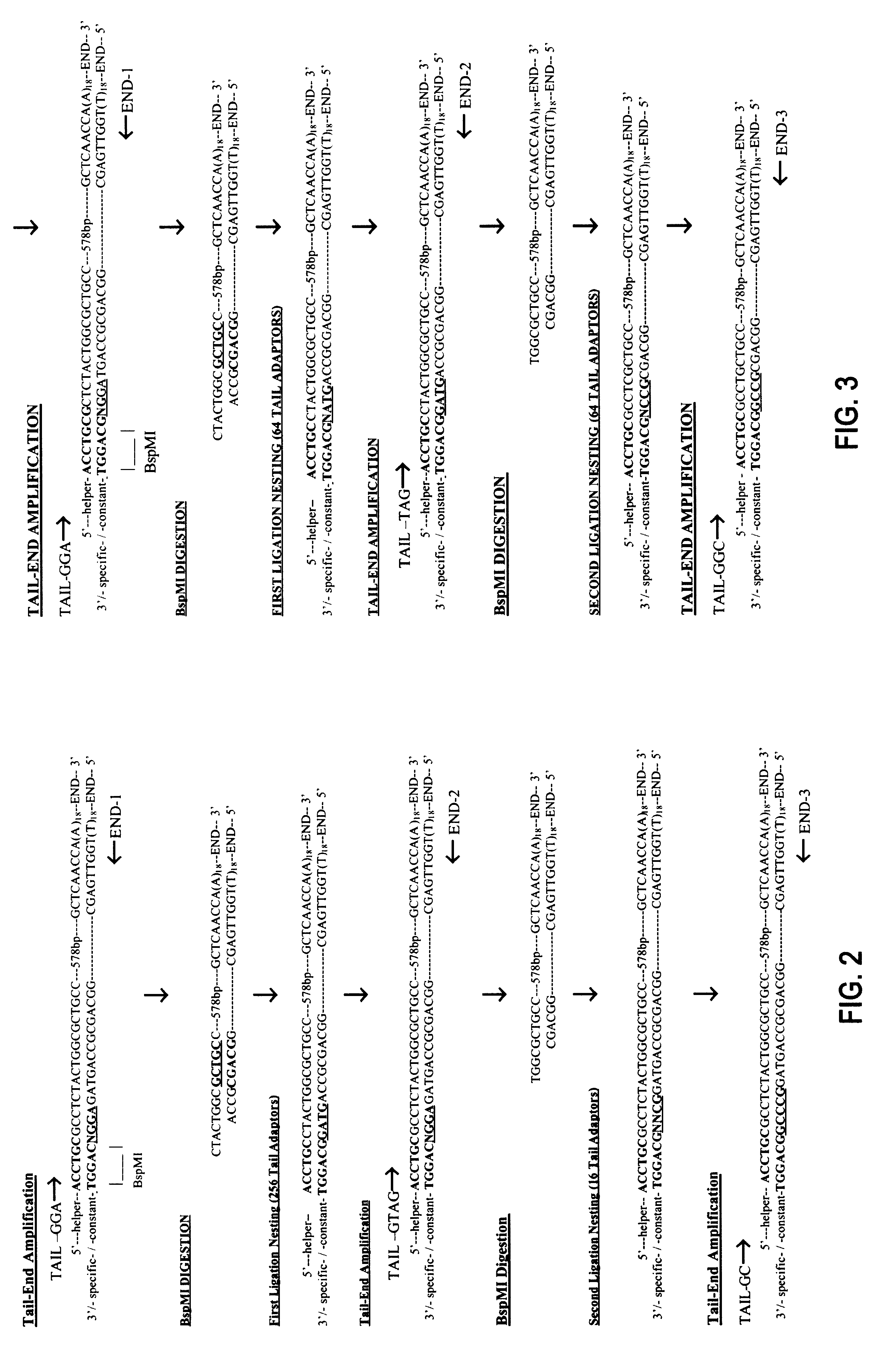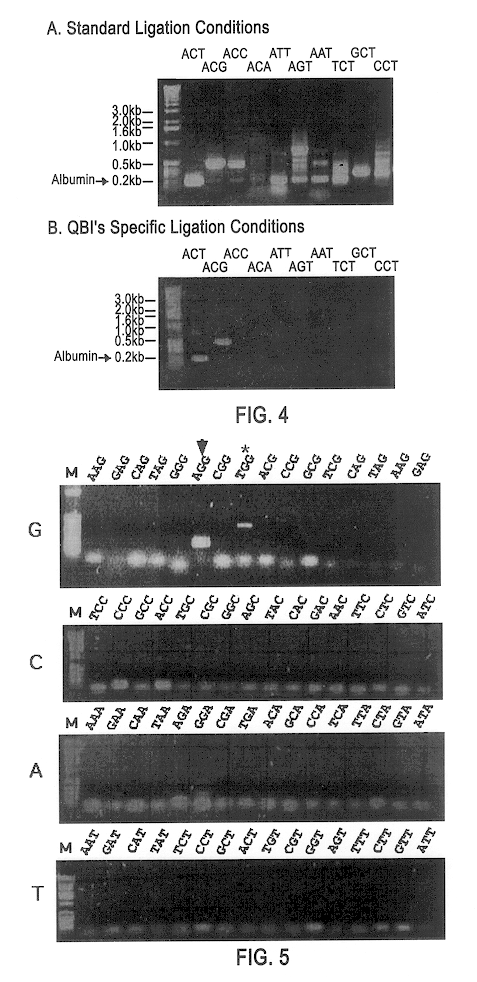Sequence-dependent gene sorting techniques
a gene sorting and sequence-dependent technology, applied in the field of sequence-dependent gene sorting techniques, can solve the problems of redundancy, pointless duplication of research efforts and other significant inefficiencies, and the method has a limited capacity to sort dna into non-redundant groups, and achieve the effect of eliminating redundancy
- Summary
- Abstract
- Description
- Claims
- Application Information
AI Technical Summary
Benefits of technology
Problems solved by technology
Method used
Image
Examples
Embodiment Construction
, given by way of example, but not intended to limit the invention to specific embodiments described, may be understood in conjunction with the accompanying Figures, incorporated herein by reference, in which:
FIG. 1 schematically illustrates one embodiment of the principles of Method I.
FIG. 2 schematically illustrates one embodiment of the principles of Method II.
FIG. 3 schematically illustrates an alternative embodiment of the principles of Method II.
FIG. 4 shows ligation specificity permitting isolation of the rat albumin gene using the methods of the present invention.
FIG. 5 shows ligation specificity using human GAPDH gene with a particular set of ligation adaptors using the methods of the present invention.
FIG. 6 shows PCR amplification products derived from Jurkat-cell mRNA using a particular set of ligation adaptors according to the methods of the present invention. "The double stranded cDNA (derived from Jurkat cells) that was ligated to the mix of all 64 "Tail adaptor set 1...
PUM
| Property | Measurement | Unit |
|---|---|---|
| Angle | aaaaa | aaaaa |
| Electric charge | aaaaa | aaaaa |
Abstract
Description
Claims
Application Information
 Login to View More
Login to View More - R&D
- Intellectual Property
- Life Sciences
- Materials
- Tech Scout
- Unparalleled Data Quality
- Higher Quality Content
- 60% Fewer Hallucinations
Browse by: Latest US Patents, China's latest patents, Technical Efficacy Thesaurus, Application Domain, Technology Topic, Popular Technical Reports.
© 2025 PatSnap. All rights reserved.Legal|Privacy policy|Modern Slavery Act Transparency Statement|Sitemap|About US| Contact US: help@patsnap.com



